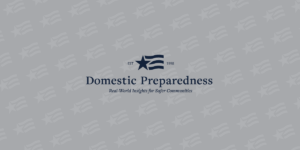

Evolving the Scope of the Strategic National Stockpile
Greg Burel
November 27, 2019
While the mission of the Strategic National Stockpile (SNS) has not changed since Congress established this national repository of emergency medicines and supplies, public health events in the United States during the past 20 years have led to a dramatic expansion of the scope of the stockpile’s capabilities. Originally focused on protecting Americans from bioterrorist threats surrounding the year 2000, or Y2K, the stockpile has grown and evolved to a greater than $8 billion enterprise that contains more than just medical countermeasures (MCMs) for biological and chemical threats. The mission authorized is broad enough to encompass virtually any threat to national health security, and the progress SNS has made operationally lends it to encompassing a continually evolving landscape of risks that might be mitigated.

Laying the Groundwork for Combating Future Threats
Catherine L. Feinman
November 25, 2019
Understanding history is a critical component of emergency preparedness, response, and resilience. History has a way of exposing preparedness and response gaps and providing a roadmap for best practices going

2013 Navy Yard Shooting: Lessons Learned, Actions Taken
Catherine L. Feinman
November 20, 2019
There is no way to list or train for the innumerable mass casualty scenarios that a responder could
face on any day, at any time, in any place. This means that no emergency response can be perfect and no
plan flawless. However, rather than focusing on the “what ifs” after an incident, responders need to
decide on the “what nows.” The military and civilian responders to the 16 September 2013 Washington Navy
Yard shooting have done that. Not only have the involved agencies created their own lessons learned,
they have also coordinated with each other to bridge the response gaps that were exposed. Key takeaways
from the shooting as well as actions that have been taken since the incident were shared on 17 September
2019, when public safety agencies throughout the National Capital Region convened to reinforce
communications efforts and address any remaining interoperability concerns.

Domestic Terrorism – Defining a Real Threat
Richard Schoeberl and Anthony (Tony) Mottola
November 13, 2019
Over the past two decades, the United States has focused heavily on preventing attacks from Islamic terrorism movements – or those inspired by these movements. However, recent attacks in the United States over the past few years have prompted much debate on how to combat the threat of domestic terrorism. Particularly concerning is that the recent surge in white supremacy and right-wing/left-wing extremist movements could inspire others to commit further violent attacks. In response to the most recent attacks in Ohio and Texas, the Federal Bureau of Investigation (FBI) says it “remains concerned that U.S.-based domestic violent extremists could become inspired by these and previous high-profile attacks to engage in similar acts of violence.” Equally concerning for law enforcement agencies is that a domestic terrorist attack is just as likely as a threat from abroad.

Post-Disaster Death Figures Do Not Tell the Whole Story
James M. Rush Sr.
November 6, 2019
In any disaster, there is a cost beyond the immediate mortality figures following a disaster due to a lack of proper medical supplies and treatment in mass care shelters. The Centers for Disease Control and Prevention publishes a weekly “Morbidity and Mortality Weekly Report,” which serves as a clearinghouse for epidemiological reports submitted by state health departments. However, a public health method must go beyond the death tolls and rates and estimate the years of life lost for people who were without medications and treatments (like dialysis) for extended periods of time during and following disasters.

